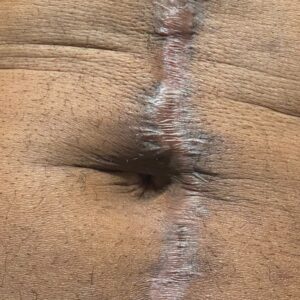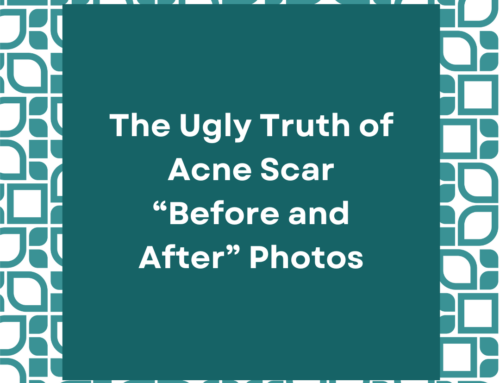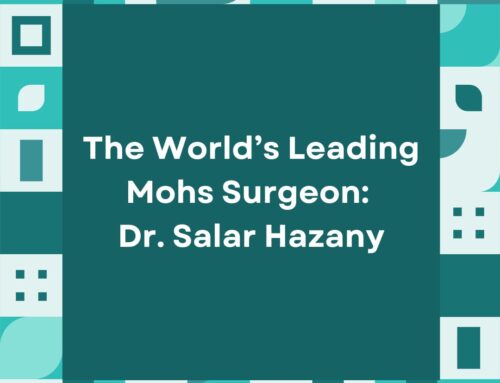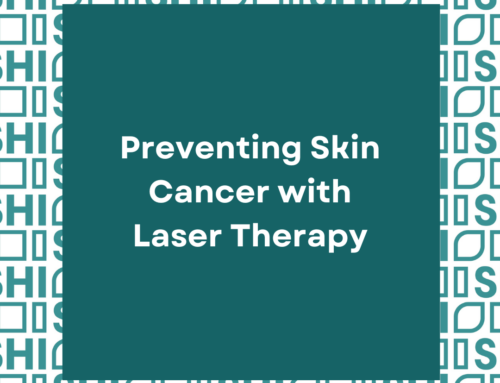Abdominoplasty, more commonly known as a “tummy tuck,” is a go-to procedure for those seeking a flatter, firmer abdomen. It involves the removal of excess fat and skin while also tightening the underlying abdominal muscles.
This operation can be particularly beneficial for individuals who have experienced significant weight loss or have gone through childbirth.
A tummy tuck can be a “reset” button on your belly, but it invariably results in a scar. The incision typically spans from one hip to the other, positioned slightly above the pubic area to remain discreet under most clothing, including swimwear.
However, healing varies from person to person. Some may have subtle scars that merge seamlessly with their skin, while others may notice more distinct scars that can be darker, raised, or indented.
While liposuction can certainly boost patients’ confidence by giving them a more desirable body shape, liposuction can also leave behind scars at the cannula entry points.
While these scars tend to be small, they can still be noticeable, especially if they are hyperpigmented, raised, and/or dipped. These can be very distressing to patients, who may not want to leave behind any signs of past surgical procedures, let alone liposuction.
What are some causes for tummy tuck scars?
Each week, the Scar Healing Institute reviews 5 to 10 tummy tuck scar cases. Several factors impact these scars. Genetics, skin type, and sun exposure are among the primary contributors. Scars are not typically the result of one isolated factor. They arise due to a combination of the patient’s healing process and the surgical techniques used. Proper care and early intervention can reduce the prominence of tummy tuck scars.
What can I do to treat liposuction scarring?
Scars develop due to heightened inflammation in the skin. This inflammatory reaction can either cause too little or too much collagen production, leading to either depressed (atrophic) or raised (hypertrophic) scars. Furthermore, an increased production of melanin can cause darkening or hyperpigmentation of the skin. Managing this inflammation early ensures balanced collagen and melanin production after surgery.
Treatments include:
- Steroid Injections: These can effectively curb the localized inflammatory reaction, reducing the risk of fibrous scar tissue development.
- Silicone Sheets: They offer a hydrated, shielded environment that promotes better healing and reduces inflammation.
- Microneedling with Acid: This method uses tiny needles to create controlled micro-injuries on the skin, stimulating collagen production. When combined with acid, it exfoliates the skin, promoting cell turnover and improved texture. This combined approach can lead to smoother skin and reduced visibility of scars. However, achieving desired results might require multiple sessions.
Many patients inquire about the efficacy of laser therapy in scar prevention, often in the context of diminishing pigment. While several lasers can lessen pigment, it may make it worse because the treatment can trigger a post-inflammatory response. This reaction, in some individuals, can lead to increased melanin production, exacerbating hyperpigmentation rather than reducing it. It’s essential to approach laser treatments with caution and under the guidance of a seasoned dermatologist. It is crucial to consult a dermatologist to determine the appropriate time for laser treatment on scars.
What is the best treatment for liposuction scarring?
There are a variety of treatments available for liposuction scarring. However, treatments should be chosen based on the morphology of the scars.

Hypertrophic scars
Hypertrophic, or raised, liposuction scars result from the overproduction of collagen during the wound healing process. Usually, steroid injections are effective for reducing the bumpiness of the scar early in the scar formation process. However, for more mature and dense scars, these injections may not be as effective.
Instead, chemotherapeutic agents, such as 5-fluorouracil and bleomycin, are more potent agents that can effectively break apart collagen fibers in the scar. These do come with more side effects, such as pain and ulceration, but they can be diluted with other less harsh ingredients to achieve the same results.
Laser therapy is also another effective treatment. Lasers, such as the pulsed-dye laser (PDL), KTP laser, and Nd:YAG laser are great for killing the blood vessels that “feed” the scar, helping it shrink over time. Combining these modalities with injections can promote a synergistic improvement in scar appearance.
Atrophic scars
Atrophic liposuction scars are essentially the opposite of hypertrophic scars. They are caused by the loss of collagen during scar formation, leading to depressions in the skin.
There are numerous treatments available to lift liposuction scars. For severely depressed scars, subcision is one of the best treatments available. A lot of patients ask if lasers would also be a great option.
Even though some patients may see great results, it is hard for lasers to correct deep scars because it only reaches the epidermis. At the Scar Healing Institute, we like to wait until the very end when the scar is almost level with the surrounding skin before pursuing laser-based treatments.
When it comes to subcision, fillers can be injected simultaneously to further improve results. Fillers essentially act as “spacers” that keep the scar lifted after subcision.
There are a variety of different fillers, including hyaluronic acid, poly-l-lactic acid, PMMA, and autologous fat. Every physician and patient has his or her own preference when it comes to fillers, it is important to keep it mind that fillers last for different periods of time.
Find out how to get a Tummy Tuck with one of the many talented dermatological surgeons today at Scar Healing Institute.
Schedule an Appointment
Scar Healing Institute
Scar Healing Institute is committed to developing the most effective treatments for scarring. Our team of scar revision specialists are continually inventing the latest technologies and formulas to deliver the best results for our patients.




